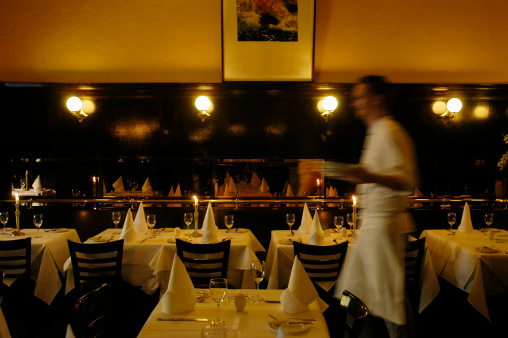Chinese Food Islamabad: Take Pleasure In Genuine Chinese Cuisine at its Best
Chinese Food Islamabad: Take Pleasure In Genuine Chinese Cuisine at its Best
Blog Article
Savor Genuine Eastern Cuisine With a Pan-Asian Twist for a Culinary Journey
Starting a cooking trip with genuine Eastern food, boosted with a Pan-Asian twist, offers an one-of-a-kind possibility to discover the rich tapestry of flavors that define the area's varied culinary traditions. This experience invites you to appreciate the splendid balance of preferences-- pleasant, salty, spicy, and sour-- integrated by fragrant natural herbs and seasonings. Envision the cutting-edge combination of Thai curry and ramen or the unexpected delight of sushi burritos. As you consider these tempting recipes, think about the social narratives and historical influences that shape them, each bite using a story waiting to be found.

Checking Out Pan-Asian Flavors
In the world of global gastronomy, Pan-Asian food sticks out for its exceptional variety and the harmonious interaction of tastes from various Asian cultures. This culinary method celebrates the distinct components and abundant practices found across the continent, producing a tapestry of tastes that is both enjoyable and fascinating. Trick to Pan-Asian cuisine is its capability to balance contrasting tastes-- pleasant, salty, spicy, and sour-- while highlighting the quality and high quality of each ingredient.
From the umami-rich soy sauce of Japan to the intense chili peppers of Thailand, Pan-Asian cuisine offers a comprehensive combination of flavors. These aspects are frequently incorporated in innovative means, enhancing dishes with layers of complexity. As an example, the usage of aromatic herbs such as lemongrass and cilantro, common in Vietnamese and Thai food, adds a refreshing brightness to recipes, while the unification of coconut milk delivers a luscious, abundant appearance.
The focus on fresh fruit and vegetables and aromatic seasonings makes certain that each meal is not just a banquet for the palate but also for the detects. Pan-Asian cuisine invites restaurants to start a cooking journey, checking out the large and varied landscapes of Oriental gastronomy with every bite.
Combination Dishes to Attempt
While Pan-Asian food is commemorated for its traditional flavors, the modern cooking landscape is significantly accepting fusion meals that mix these classic elements with influences from various other regions. This cutting-edge technique not just honors the rich heritage of Asian cookeries but likewise presents novel preference experiences that interest modern palates.
A prime instance of such a fusion meal is the Korean-Mexican taco, where marinaded bulgogi beef is covered in a warm tortilla, covered with kimchi and a hot gochujang-infused salsa. This mix weds the strong, mouthwatering flavors of Korea with the lively, fresh elements of Mexican cuisine. In a similar way, sushi burritos have gotten popularity, integrating the delicate artistry of Japanese sushi with the hearty, hand-held convenience of a burrito, usually featuring combination active ingredients like tempura shrimp and avocado with a drizzle of wasabi mayo.
An additional significant dish is Thai curry ramen, which instills the velvety, aromatic spices of Thai curry into the calming broth of traditional Japanese ramen, producing a harmonious blend that entices the senses. These blend recipes expand past simple novelty; they represent a culinary dialogue between cultures, encouraging expedition and technology in the world of Pan-Asian cuisine.
Essential Active Ingredients and Spices
To absolutely value Pan-Asian cuisine, one have to understand the important components and flavors that create its structure. This varied culinary style draws from an abundant tapestry of Asian traditions, employing an unified mix of tastes and textures. Key components consist of soy sauce, fish sauce, and oyster sauce, which pass on a savory umami deepness necessary to Asian recipes. Corresponding to these are rice vinegar and mirin, offering a delicate level of acidity and sweet taste.
Fragrant components are pivotal, with lemongrass, ginger, and garlic being common throughout different Pan-Asian dishes. These ingredients provide a fragrant base that boosts the intricacy of flavors. Seasonings such as star anise, cardamom, and cinnamon introduce heat and character, resembling impacts from regions like China and India.

Cooking Techniques and Tips
Understanding the art of Pan-Asian food needs knowledge with its distinctive food preparation methods, each adding to the vivid tapestry of flavors this cooking tradition is commemorated for. Central to these methods is the stir-fry, a rapid cooking technique that protects the nutritional integrity and vibrant colors of components. Utilizing a wok, the stir-fry method allows for even warmth circulation, necessary for attaining the characteristic texture and taste balance of Pan-Asian recipes.
One more fundamental strategy is steaming, specifically prevalent in Chinese food. This mild approach keeps the all-natural tastes and nutrients of ingredients, making it optimal for fish and shellfish and veggies. Dumplings, a precious staple, typically next page gain from steaming, resulting in soft, delicious structures.
Barbecuing, additionally integral, passes on great smoky midsts to meals such as Korean bulgogi or Japanese yakitori (Chinese food Islamabad). This technique often involves seasoning active ingredients, permitting flavors to permeate deeply before cooking over an open flame or warm plate
Finally, grasping the art of balancing tastes-- sweet, sour, salty, bitter, and umami-- is vital. Effectively layering these aspects can elevate a dish from ordinary to phenomenal, using a complex and pleasing culinary experience that embodies the essence of Pan-Asian food.
Eating Experiences Worldwide
Throughout the world, Pan-Asian cuisine provides an unparalleled dining lefty's cheesesteak experience, celebrated for its rich tapestry of flavors and dynamic discussions. This culinary phenomenon has gone beyond social limits, recording the hearts and tastes of food fanatics worldwide. In worldwide cities fresh York, London, and Sydney, Pan-Asian restaurants work as fusions where culinary practices from Thailand, Japan, China, and beyond assemble, giving restaurants with an eclectic mix of meals that highlight the area's variety.
The global appeal of Pan-Asian cuisine hinges on its capacity to supply both credibility and advancement. Cooks masterfully marry typical ingredients such as lemongrass, soy sauce, and miso with contemporary strategies, causing meals that are both refreshingly new and acquainted. This blend enables diners to start a culinary journey that appreciates heritage while embracing modernity.
Additionally, dining experiences are boosted through thoughtfully designed environments that show the ethos of Pan-Asian appearances. From minimal Japanese-inspired insides to vivid Thai-themed spaces, each restaurant supplies a special atmosphere that complements the culinary offerings. Therefore, customers are not just taking in a meal but partaking in a cultural experience, making Pan-Asian eating an absolutely global sensation.
Conclusion
The expedition of Pan-Asian food offers an extensive understanding of the elaborate interplay of flavors and culinary customs across Asia. By accepting fusion dishes such as Thai curry ramen and sushi burritos, the cooking trip not just highlights the versatility of typical active ingredients however additionally showcases innovative contemporary techniques. This gastronomic journey, improved by cooking techniques and necessary spices, offers an one-of-a-kind chance to appreciate the multiculturalism and culinary artistry that specify Pan-Asian cuisine on an international scale.
Getting started visit this site on a cooking trip with authentic Eastern cuisine, improved with a Pan-Asian twist, uses a distinct chance to explore the rich tapestry of tastes that define the area's diverse cooking practices.In the realm of global gastronomy, Pan-Asian cuisine stands out for its remarkable diversity and the unified interaction of flavors from numerous Eastern cultures. Key to Pan-Asian food is its capability to stabilize different flavors-- wonderful, salty, spicy, and sour-- while highlighting the freshness and top quality of each component.

Report this page